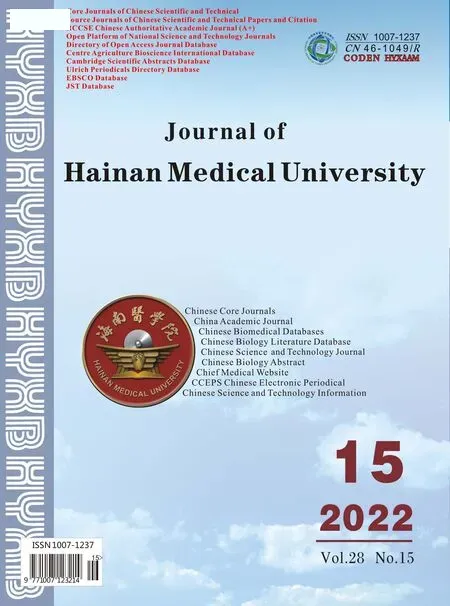Based on the national patent database to explore the rule of traditional Chinese medicine in the treatment of hyperlipidemia
Ran Zhao, Zong-Liang Yu, Long-Tao Liu, Min Wu
1. Graduate School of Beijing University of Chinese Medicine, Beijing 100029, China
2. Cardiovascular Medicine of Xiyuan Hospital, China Academy of Chinese Medical Sciences, Beijing 100091, China
3. General Department of Guang’an men Hospital, China Academy of Chinese Medical Sciences, Beijing 100053, China
ARTICLE INFO
Article history:Received 20 June 2022 Received in revised form 9 July 2022 Accepted 27 July 2022 Available online 14 Aug 2022
Keywords:Hyperlipidemia Traditional Chinese medicine compound Patent Medication rule Data mining
ABSTRACT Objective: To explore the medication law of traditional Chinese medicine compound patent for hyperlipidemia, and to provide reference for the research and development of traditional Chinese medicine new drugs for clinical treatment of hyperlipidemia. Methods: All compound TCM patents related to the treatment of hyperlipidemia were searched and extracted from the national patent database (http://epub.sipo.gov.cn) from the establishment of the database to 10st, March 2021. The data was established by the TCM Inheritance Support System (V2.5)and Microsoft Excel 2010 Softwore, and used to conduct TCM syndromes, frequency statistics,four nature and five flavors of traditional Chinese medicine, meridian attribution statistics.IBM SPSS statistics 20 software was used for drug clustering analysis, IBM SPSS modeler 18.2.2 software was used for association rules and web visualization analysis. Results: Totally 284 compound TCM patents were included, involving 577 kinds of Chinese medicine, and the most common syndrome was Yin deficiency of liver and kidney syndrome (74 times, accounting for 26.06%). The most ten common Chinese materiamedica was Hawthorn, Salvia miltiorrhiza,Alismaorientalis, Cassia seed, Polygonummultiflorum, Licorice, Poriacocos, chinese rhubarb,dried tangerine peel, Radix Paeoniae Alba. The top three appeared frequently in drug categories were tonifying deficiency medicine, activating blood-circulation and dissipating blood-stasis medicine, and heat-clearing medicine, respectively. The top two of its drug properties were warm and cold; the top three drug tastes were sweet, bitterness and pungent; the top two meridians were liver and spleen meridian, respectively. Seven drug groups were obtained by cluster analysis, and 16 were obtained by association rule analysis, including 5 drug pairs and 11 three drug groups. Conclusion: Through the data mining of the patent of traditional Chinese medicine compound prescription for regulating and treating hyperlipidemia, it is concluded that the fundamental pathogenesis of the disease is deficiency of viscera function and obstruction of phlegm and blood stasis. The clinical methods are tonifying the liver and kidney, activating blood circulation and removing stasis, resolving phlegm and removing dampness. Traditional Chinese medicine is mostly used for tonifying deficiency, activating blood circulation,removing stasis, resolving phlegm and removing dampness. This paper provides a reference for the research and development of traditional Chinese medicine for hyperlipidemia.
 Journal of Hainan Medical College2022年15期
Journal of Hainan Medical College2022年15期
- Journal of Hainan Medical College的其它文章
- Research progress of autophagy in acute lung injury induced by multiple factors
- Research progress and comparison of the establishment of animal models of radiotherapy or chemotherapy-induced oral mucositis
- Nonsurgical intervention for neuroclaudication due to lumbar spinal stenosis: Interpretation of the 2021 American Association for the Study of Pain Guidelines
- A mechanism to improve early diabetic nephropathy by modulating autophagy-related mechanisms with Yuye Decotion
- Study on the mechanism and active components of Radix et Rhizoma Rhei in the treatment of Alzheimer's disease based on molecular docking
- Meta analysis of the effect of aerobic exercise on inflammatory factors and glucose and lipid metabolism in patients with type 2 diabetes mellitus
